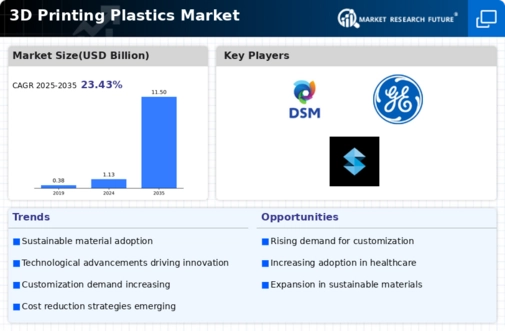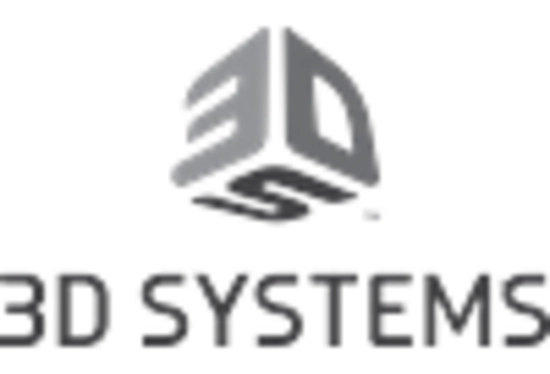Market Analysis
In-depth Analysis of 3D Printing Plastics Market Industry Landscape
The market dynamics of the 3D printing plastics market are influenced by several key factors that collectively shape its growth, trends, and overall trajectory.
Rapid Growth of 3D Printing Industry: The 3D printing industry has experienced significant growth in recent years, driven by advancements in technology, reduced costs of 3D printers, and increasing applications across various sectors. This growth directly impacts the demand for 3D printing plastics, as these materials are essential for additive manufacturing processes in industries such as aerospace, automotive, healthcare, and consumer goods.
Technological Advancements in 3D Printing: Market dynamics in the 3D printing plastics market are influenced by continuous technological advancements in additive manufacturing processes and materials. Market dynamics related to technology include innovations in filament extrusion, resin curing, powder sintering, and binder jetting techniques, leading to the development of new 3D printing plastics with enhanced properties such as strength, flexibility, and heat resistance.
Diverse Range of Plastic Materials: The 3D printing plastics market offers a diverse range of materials suited for different applications and printing technologies. Market dynamics in the market are influenced by the availability of various types of 3D printing plastics, including thermoplastics (such as PLA, ABS, PETG), photopolymers, polyamides (nylons), and composites (filled with carbon fiber, glass fiber, or metal particles). Market dynamics related to material diversity include the demand for specialized plastics tailored to specific industry requirements and performance criteria.
Customization and Design Flexibility: Market dynamics in the 3D printing plastics market are driven by the ability to customize and design complex geometries with additive manufacturing processes. Market dynamics related to customization and design flexibility include the demand for 3D printing plastics that offer high precision, dimensional accuracy, and repeatability in producing custom prototypes, functional parts, and end-use products with intricate designs and features.
End-User Industry Applications: Market dynamics in the 3D printing plastics market are influenced by the diverse applications across end-user industries. Market dynamics related to industry applications include the adoption of 3D printing plastics in aerospace for lightweight components, automotive for rapid prototyping and customization, healthcare for patient-specific medical devices, and consumer goods for personalized products. Market dynamics also reflect the growing interest in 3D printing plastics for architectural models, jewelry, and educational purposes.
Market Demand for Sustainable Materials: Market dynamics in the 3D printing plastics market are shifting towards sustainable materials and environmentally friendly manufacturing processes. Market dynamics related to sustainability include the demand for bio-based plastics, recycled materials, and biodegradable polymers that reduce environmental impact and support circular economy initiatives. Market players are responding to these dynamics by developing eco-friendly 3D printing plastics with comparable performance properties to traditional materials.
Cost-Effectiveness and Material Performance: Market dynamics in the 3D printing plastics market are influenced by the balance between cost-effectiveness and material performance. Market dynamics related to cost-effectiveness include the need for affordable 3D printing plastics that offer high-quality prints and consistent results. Market dynamics related to material performance include considerations such as mechanical properties, chemical resistance, and post-processing capabilities that affect the suitability of 3D printing plastics for specific applications.
Regulatory Compliance and Quality Standards: Market dynamics in the 3D printing plastics market are shaped by regulatory compliance and quality standards. Market dynamics related to regulations include adherence to safety, health, and environmental regulations governing the use of 3D printing plastics. Market dynamics related to quality standards include certifications and testing requirements to ensure material consistency, mechanical properties, and performance reliability in additive manufacturing processes.
Market Competition and Innovation: Market dynamics in the 3D printing plastics market are driven by competition among manufacturers and suppliers. Market dynamics related to competition include pricing strategies, product differentiation, and market positioning to gain a competitive edge. Market dynamics also reflect ongoing innovation in materials development, process optimization, and application engineering to meet evolving customer needs and industry requirements.
Global Economic Conditions and Industry Trends: Market dynamics in the 3D printing plastics market are influenced by global economic conditions and industry trends. Market dynamics related to economic factors include GDP growth, consumer spending, and investment trends that impact market demand and investment decisions. Market dynamics related to industry trends include emerging applications, technological disruptions, and market consolidation that shape the competitive landscape and drive market dynamics in the 3D printing plastics market.

















Leave a Comment